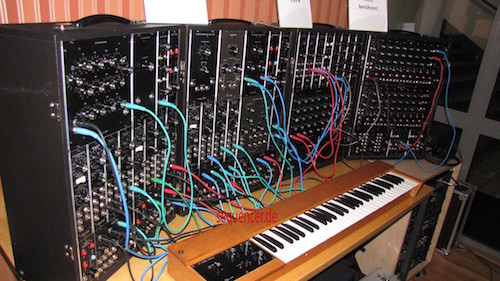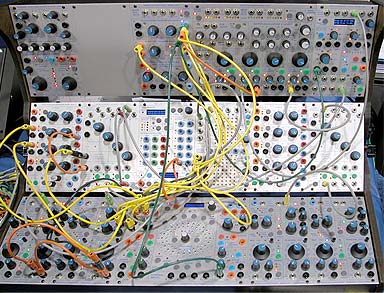By Brendan O’Brien
Techno is unpleasant. For the many it’s music reserved for eccentrics who have nothing better to do than hang out in poorly lit warehouses until 6am. Techno is basic music made by basic people who don’t know… stuff. That Family Guy clip is totally right, there isn’t even a key. What a bunch of losers.
Now that we all agree that techno is awful, let’s look at where this bastardized non-music started:
That’s right. Schoenberg is the father of techno, all the way back in 1920-something. He was German. He had an irrational fear of the number 13. He made music that sounded like absolute garbage. Also, he was German.
Schoenberg and his compadres made what is now referred to as atonal music. Music that had no tonal center. Bored with the music being made at the time, they threw out the rule book on how to arrange notes and made their own. Some called it trash, others called it high art (which is to say “I don’t get it, but don’t want to look uncultured”). The A-team pushed hard for this style, and believed that in time it would become the dominant form of music. Don’t worry, unless you’re an art school grad, no one will expect you to know that. They flamed out pretty hard. Eventually a tonal center crept back into nearly all music being made. Except…
Of the 20 seconds you heard before smashing your computer to make it stop playing those awful noises, what key would you say this is in? C minor? F? The answer, of course, is synthesizer. It’s in the key of who-cares, the relative minor of mooger frooger. This is techno. Techno is true atonal music. Lemme bold that for you.
Techno is true atonal music.
Much better. Sure it’s true that lots of techno/grime/acid/d&b/whatever have a key signature, a tonal center, and sometimes even notes that resemble normal music. But their role is secondary. Here’s an actual version of our Family Guy clip.
This is Schoenberg’s dream and nightmare IRL. This is music, with no tonal center, being made en masse for popular consumption. It’s his dream because it rips up the musical rule book. It’s his nightmare because, well, Schoenberg’s clubbing days are long over.
Schoenberg and the A-team were trying to push the envelope, atonal music was a meditated effort to broaden horizons, and in many, many ways they were successful. However, they came nowhere near the success of techno for one simple reason: knobs. Schoenberg’s piano probably looked something like this:

And a techno producer’s piano looks something like this:

See, the difference is knobs. Lots of knobs. More knobs is better. Schoenberg and co. mounted their assault on musical norms with the only tools they had at the time, notes. The only “sound manipulation” was swapping a piano for a tuba, or firing your 2nd chair piccolo player. If only they had knobs.
This modular synth came onto the scene just forty-ish years later, and it had knobs. Remember, more knobs = better. More knobs is more ways to manipulate sound. Techno is post-synth music, able to manipulate a dimension of that the atonal people couldn’t previously. Techno is the manipulation of sound over the manipulation of notes. It’s the spiritual successor to the atonal movement.
Obviously this “sound manipulation” doesn’t just apply to techno. Nowadays, errybody is all up in some sort of synth. Modern music-making is a unison of both sound manipulation and musical composition. Both are viewed as avenues of creative expression.
All of this is made easier by Schoenberg and friends, who started asking these questions in the first place. So here’s to you Schoenberg, father to a bunch of kids who you probably think are screw-ups, but are totally boss in my books.
—
Brendan O’Brien is a New York-based graphic designer with other redeeming qualities. You can follow his writing at @Formal Fiction and listen to the music he makes and curates on his Soundcloud.
An earlier version of this article was published on Brendan O’Brien’s Medium page @Formal Fiction. You can read the original here.




